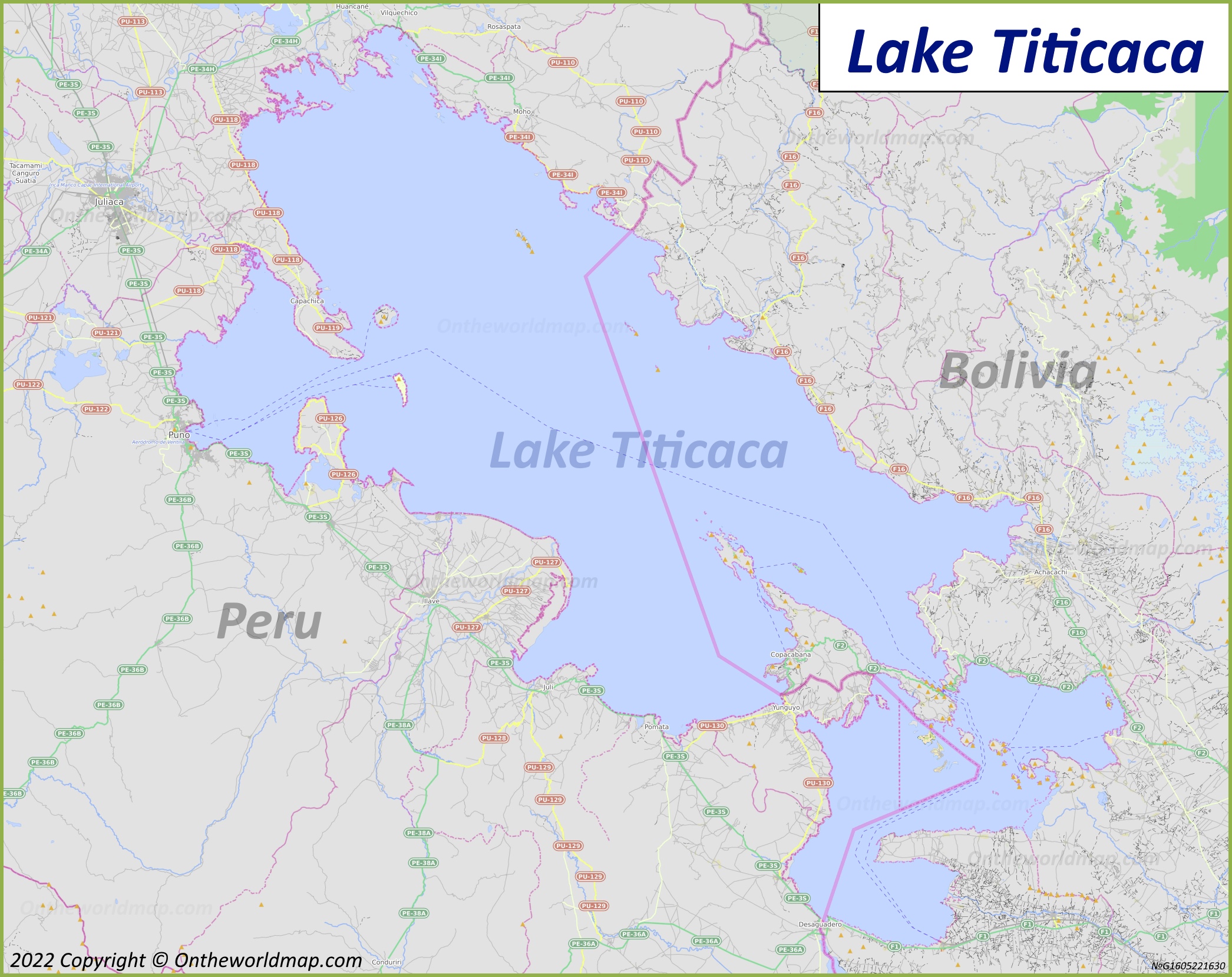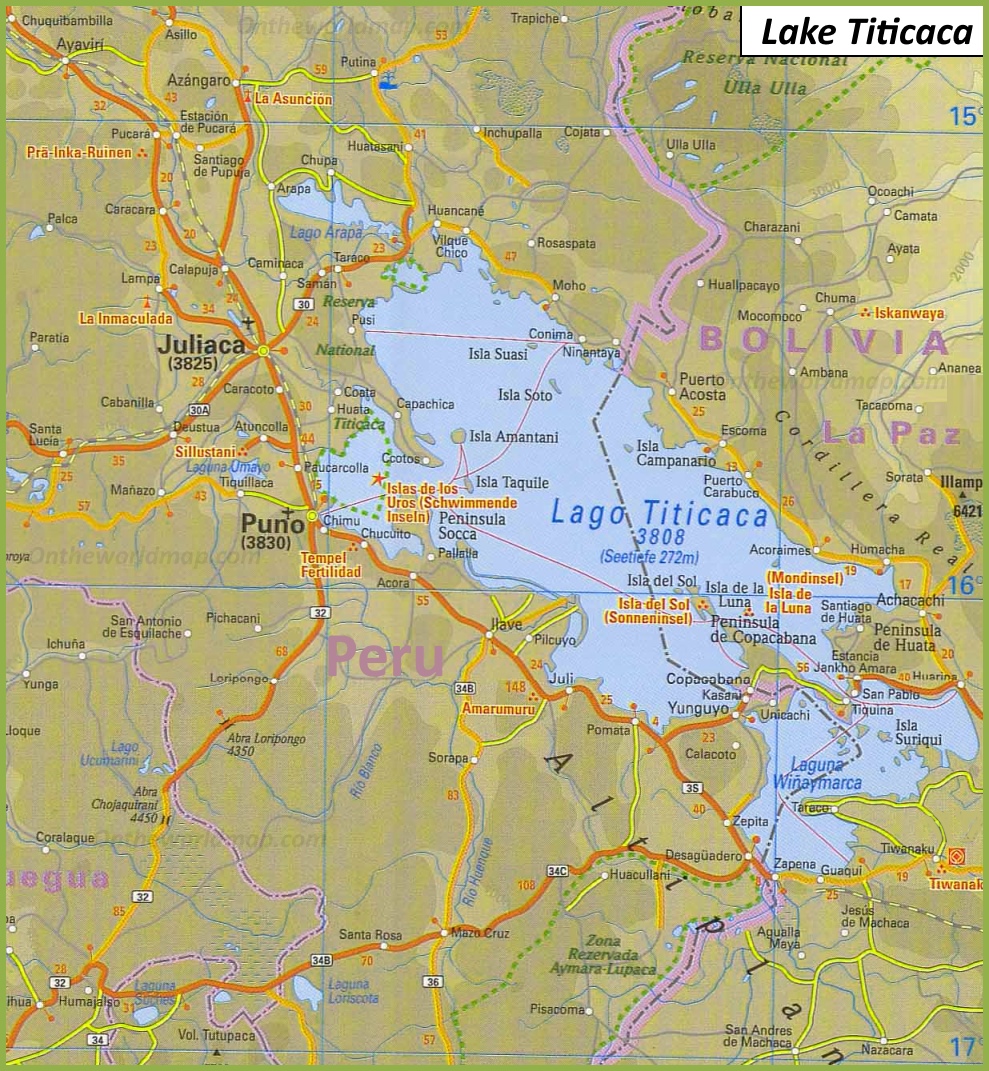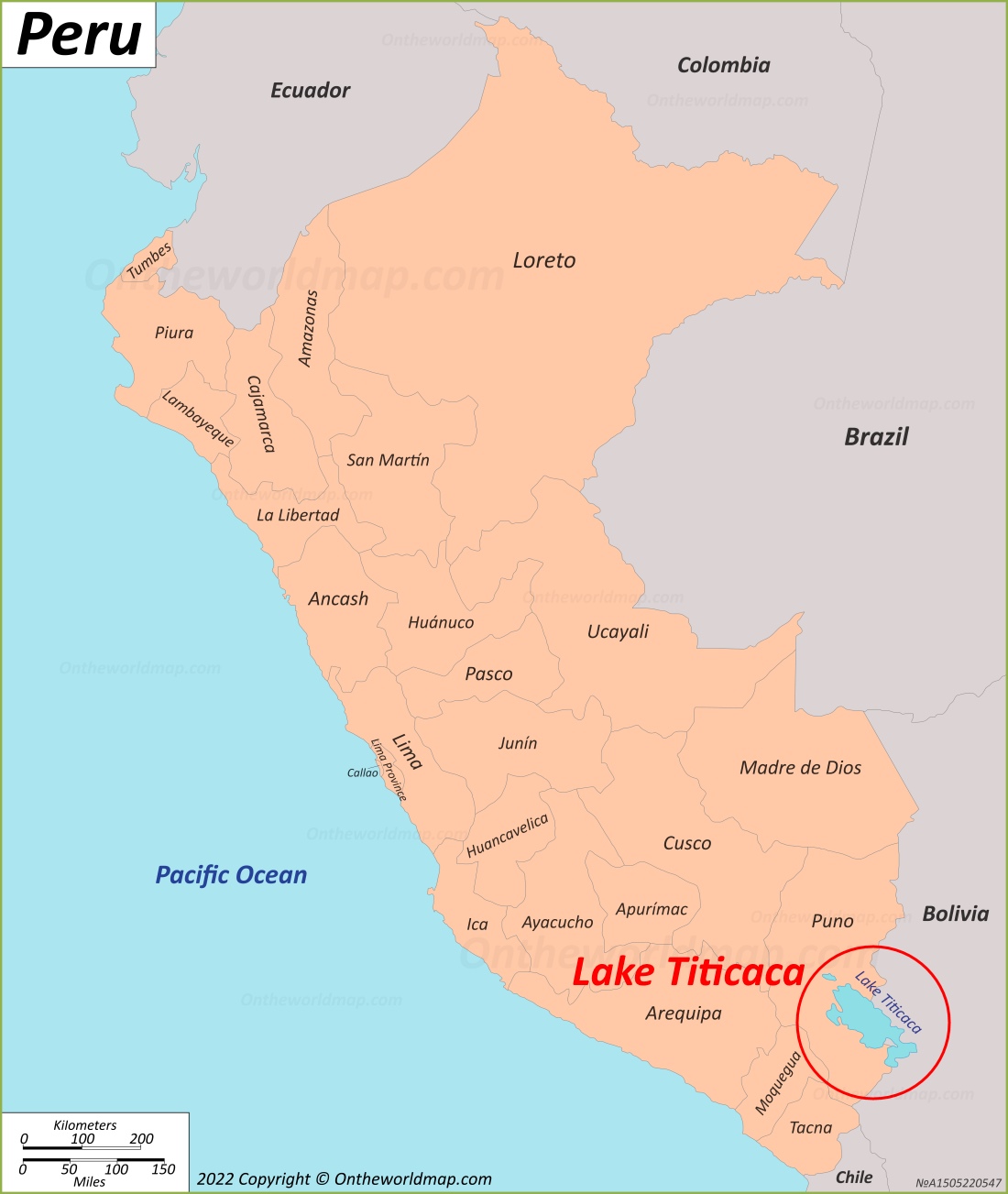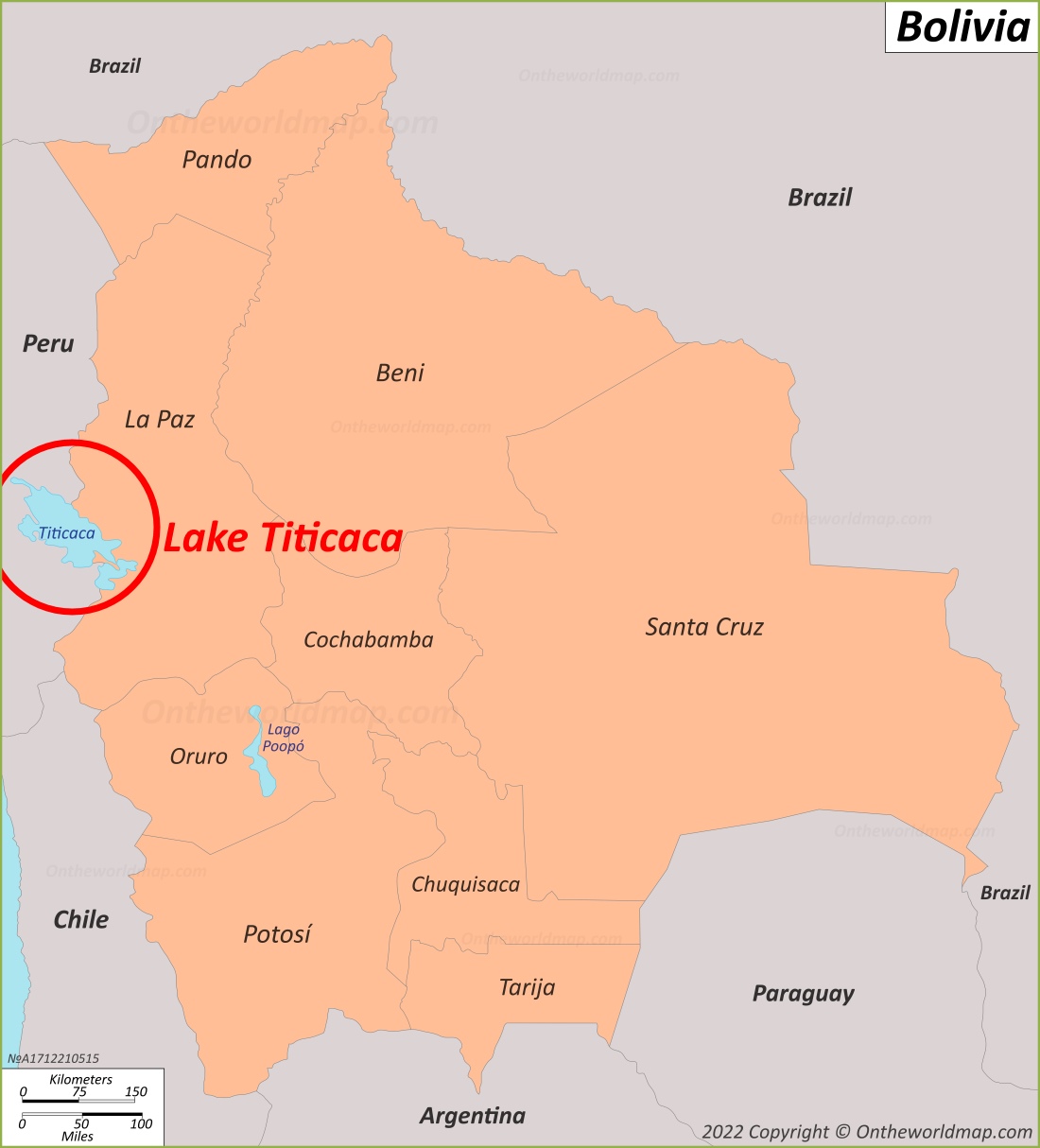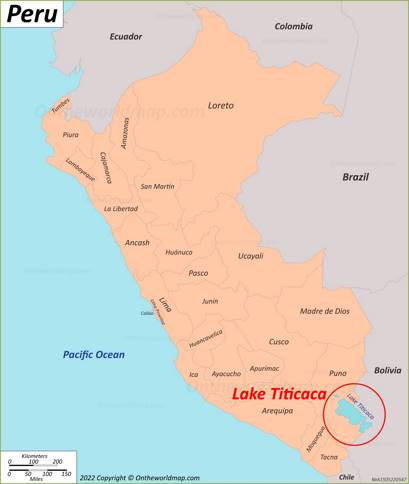Lake Titicaca Map
Description:
Size: 2091x1659px / 1,06 Mb
Author: Ontheworldmap.com
Map based on the free editable OSM map openstreetmap.org.
You may download, print or use the above map for educational, personal and non-commercial purposes. Attribution is required. For any website, blog, scientific research or e-book, you must place a hyperlink (to this page) with an attribution next to the image used.
Description:
Size: 989x1071px / 583 Kb
Description:
Size: 1100x1303px / 205 Kb
Author: Ontheworldmap.com
You may download, print or use the above map for educational, personal and non-commercial purposes. Attribution is required. For any website, blog, scientific research or e-book, you must place a hyperlink (to this page) with an attribution next to the image used.
Description:
Size: 1100x1214px / 166 Kb
Author: Ontheworldmap.com
You may download, print or use the above map for educational, personal and non-commercial purposes. Attribution is required. For any website, blog, scientific research or e-book, you must place a hyperlink (to this page) with an attribution next to the image used.
Online Map of Lake Titicaca
About Lake Titicaca
Lake Titicaca is the largest freshwater lake in South America and the highest navigable body of water in the world. Located in the Andes Mountains on the border between Peru and Bolivia at an elevation of 12,507 feet (3,812 meters) above sea level, it covers an area of approximately 3,232 square miles (8,372 square kilometers). The lake is considered sacred by the indigenous peoples of the region and played a significant role in Inca mythology.

The lake was formed approximately 60 million years ago when a massive earthquake split the Andes mountains, creating a deep basin that eventually filled with water from melting glaciers. The lake's average depth is 107 meters (351 feet), with its deepest point reaching 281 meters (922 feet). Lake Titicaca is fed by rainfall and meltwater from glaciers in the surrounding Andes mountains, with more than 25 rivers flowing into the lake.
One of the lake's most notable features is its numerous islands, including both natural and artificial ones. The Uros Islands are perhaps the most famous, consisting of approximately 120 floating islands made entirely of totora reeds. These islands are home to the Uros people, who maintain their traditional lifestyle by regularly adding new layers of reeds to their islands. Another significant island is Taquile, known for its rich textile traditions and pre-Inca ruins. The largest island in the lake is Isla del Sol (Island of the Sun), located on the Bolivian side, which according to Inca mythology, was the birthplace of the sun god Inti.
The lake's ecosystem supports a diverse array of wildlife, including more than 530 aquatic species. The most notable among these are the large endangered Titicaca water frog and the Titicaca orestias, a species of fish found nowhere else in the world. The lake region is also home to numerous bird species, including Andean flamingos, cormorants, and Andean gulls.
Tourism plays a crucial role in the local economy, with visitors coming to explore the ancient ruins, traditional communities, and unique ecosystem. The Sillustani burial grounds, located near the lake, feature impressive pre-Inca funeral towers called chullpas. The lake's shoreline contains several significant archaeological sites, including Tiwanaku, an ancient city that predates the Inca Empire and showcases remarkable architectural achievements. Climate change and pollution pose significant threats to the lake's ecosystem, with rising temperatures and urban development impacting water levels and biodiversity. Conservation efforts are ongoing to protect this unique natural and cultural heritage site.
The Facts:Countries: Bolivia and Peru.
Region: Puno Region of Peru, Bolivian La Paz Department.
Area: 3,232 sq mi (8,372 sq km).
Max. depth: 922 ft (281 m).

